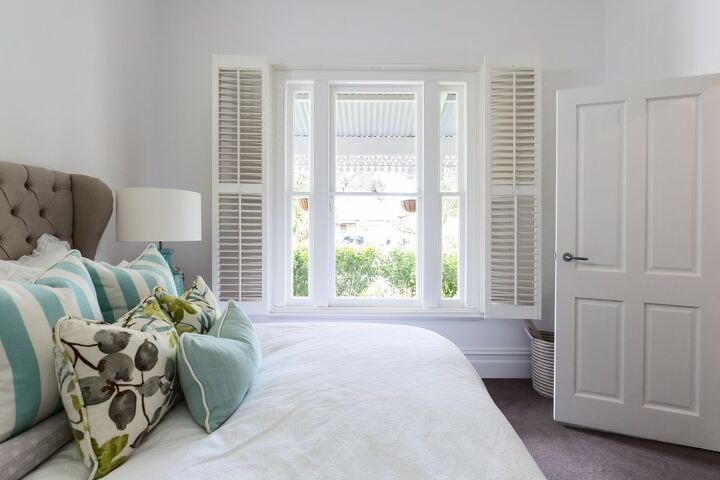Standard Sliding Window Sizes (With Drawings)

Replacing your home’s windows can make a huge difference to your house’s exterior and its value. Sliding windows are a popular style, whether horizontal or vertical, and purchasing standard sliding window sizes is a cost-effective decision. Luckily, you have many standard sizes to choose from when it comes to sliding windows.
If you are considering replacing your windows, get a quote from local contractors in your area here.
Standard horizontal sliding windows come in 36, 48, 60, 72, and 84-inch widths and 23, 26, 48, and 60-inch heights. Vertical sliding windows come in standard sizes featuring widths between 24 and 48 inches and heights between 36 and 72 inches. These sizes represent the rough opening of the window, so the actual window will be ½-inch smaller.
Standard window sizes are the way to go if you want to make a big impact on a smaller budget. Otherwise, you need to order custom-size windows, which can add a lot to your bottom line. Therefore, explore all of your standard window sizes to get the most bang for your buck.
What Are the Standard Sizes of Vertical Sliding Windows?
Vertical sliding windows are popularly known as single-hung or double-hung windows. These windows feature two panels of glass. In single-hung, one panel slides up or down to open the window.
If you have a double-hung sliding window, you can slide both panels, choosing to open the window from the top or bottom. Standard single-hung and double-hung window sizes range from 36 to 72 inches tall and between 24 and 48 inches wide.
Snapshot of Standard Vertical Sliding Window Sizes
- 24 inches wide by 36, 44, 48, 52, 54, 60, 62, or 72 inches tall
- 28 inches wide by 36, 44, 48, 52, 54, 60, 62, or 72 inches tall
- 32 inches wide by 36, 44, 48, 52, 54, 60, 62, or 72 inches tall
- 40 inches wide by 36, 44, 48, 52, 54, 60, 62, or 72 inches tall
- 44 inches wide by 36, 44, 48, 52, 54, 60, 62, or 72 inches tall
- 48 inches wide by 36, 44, 48, 52, 54, 60, 62, or 72 inches tall
What Are the Standard Sizes of Horizontal Sliding Windows?
Horizontal sliding windows, or soldiers, are a great option when you have more width than height available. They also feature two glass panels, one of which is typically fixed while the other one slides sideways.
You can either opt to get a window that slides from the right or from the left. Standard sliding window sizes feature five standard widths ranging from 36 to 84 inches. They also have four standard heights between 24 and 60 inches.
Snapshot of Standard Horizontal Sliding Window Sizes
- 36 inches wide by 24, 36, 48, or 60 inches tall
- 48 inches wide by 24, 36, 48, or 60 inches tall
- 60 inches wide by 24, 36, 48, or 60 inches tall
- 72 inches wide by 24, 36, 48, or 60 inches tall
- 84 inches wide by 24, 36, 48, or 60 inches tall
How Big Is a Double Sliding Window?
A double sliding window is simply a window where both glass panels can move from side to side. For example, a double-hung window is technically a double sliding window. A horizontal double-sliding window features the same concept.
You can slide either the right or left glass panel to open the window. Therefore, the sizes of double sliding windows are the same as regular sliding windows.
What Is the Most Common Sliding Window Size?
Sliding windows come in various standard sizes, some more popular than others. Some of the most common horizontal sliding windows are 40 to 56 inches wide and between 32 and 48 inches tall.
Vertical sliding windows, like single and double-hung styles, are the most common window in the US. Therefore, they come in many different standard sizes. The most common tend to be 24 inches wide by 36 inches tall.
What Is the Minimum Width for a Sliding Window?
The smallest standard sliding window you could find would be a double-hung window 24 inches wide by 36 inches high. The smallest standard horizontal sliding window is 36 inches wide by 24 inches tall. However, this doesn’t mean you can’t get something smaller with a custom order.
But, keep in mind what you are using the window for. If the room the window is in requires an egress window, you need to consider the minimum allowed width.
An egress window serves as a point of exit in case of emergencies. Typically, a sliding window will serve as an egress window.
According to the International Residential Code (IRC), the minimum size for an egress window is 5’7” square. It needs a minimum window opening height of 24 inches and a minimum width of 20 inches.
When Should You Use a Sliding Window?
Sliding windows are a great option for extra ventilation since you can easily slide them open. You can install a smaller size in a bathroom to help let out excess steam and moisture.
You should also use sliding windows in areas with limited room on the exterior to open a window. For example, if there is something outside that would interfere with opening a casement window. Using a sliding window eliminates this problem.
Horizontal sliders are excellent for spaces with more width than height available. Or where you want to add some light but would prefer to not have too much exposure (like a bathroom). They also work well for a basement since the size is ideal for hard-to-reach areas.
How to Measure for Replacement Slider Windows
If you’re replacing existing windows, you can measure the size of the existing window. If you tell a professional the size of your existing window, they can typically determine what you need. Many window companies will come out and measure as part of your purchase.
If you want to get your own measurements for accurate dimensions, do the following.
Step One: Measure the Width
Measure between the window jambs at the top, center, and bottom. Use the smallest number you get.
Step Two: Measure the Height
Measure from the topmost point of your window sill to the top of the window’s opening. Take three measurements, measuring at the center, the right, and the left. Again, choose the smallest number.
Step Three: Measure the Depth
Measure from edge to edge of the window frame, from outside to inside. Take several measurements along the frame and use the smallest number.
Explainer Video: How to Measure for Replacement Windows
Need to measure your windows for some new window coverings? Check out our article on standard blind sizes.
Conclusion
Choosing standard sliding window sizes over custom will save you a lot of time and money. Standard sizes are typically more readily available, so you won’t have to wait for someone to make your custom windows. Plus, they’re a lot less expensive.
Horizontal sliding windows come in 36, 48, 60, 72, and 84-inch widths and 23, 26, 48, and 60-inch heights. You can get vertical sliding windows with widths between 24 and 48 inches and heights between 36 and 72 inches. Remember that the actual size of the window will be ½-inch smaller than the standard size.
If you’re unsure if a standard window will work, discuss options with your contractor first. In some cases, it could cost less to make an opening smaller or larger to accommodate a standard window over ordering custom. But every situation is unique, so make sure to consult with a professional if this applies to your project.
UpgradedHome participates in affiliate programs. When you purchase through our links, we may earn a commission.

Stacy Randall is a wife, mother, and freelance writer from NOLA that has always had a love for DIY projects, home organization, and making spaces beautiful. Together with her husband, she has been spending the last several years lovingly renovating her grandparent's former home, making it their own and learning a lot about life along the way.
More by Stacy Randall



















![10 Most Dangerous Neighborhoods in Baltimore [Updated]](https://cdn-fastly.upgradedhome.com/media/2023/07/31/9075655/10-most-dangerous-neighborhoods-in-baltimore-updated.jpg?size=350x220)









